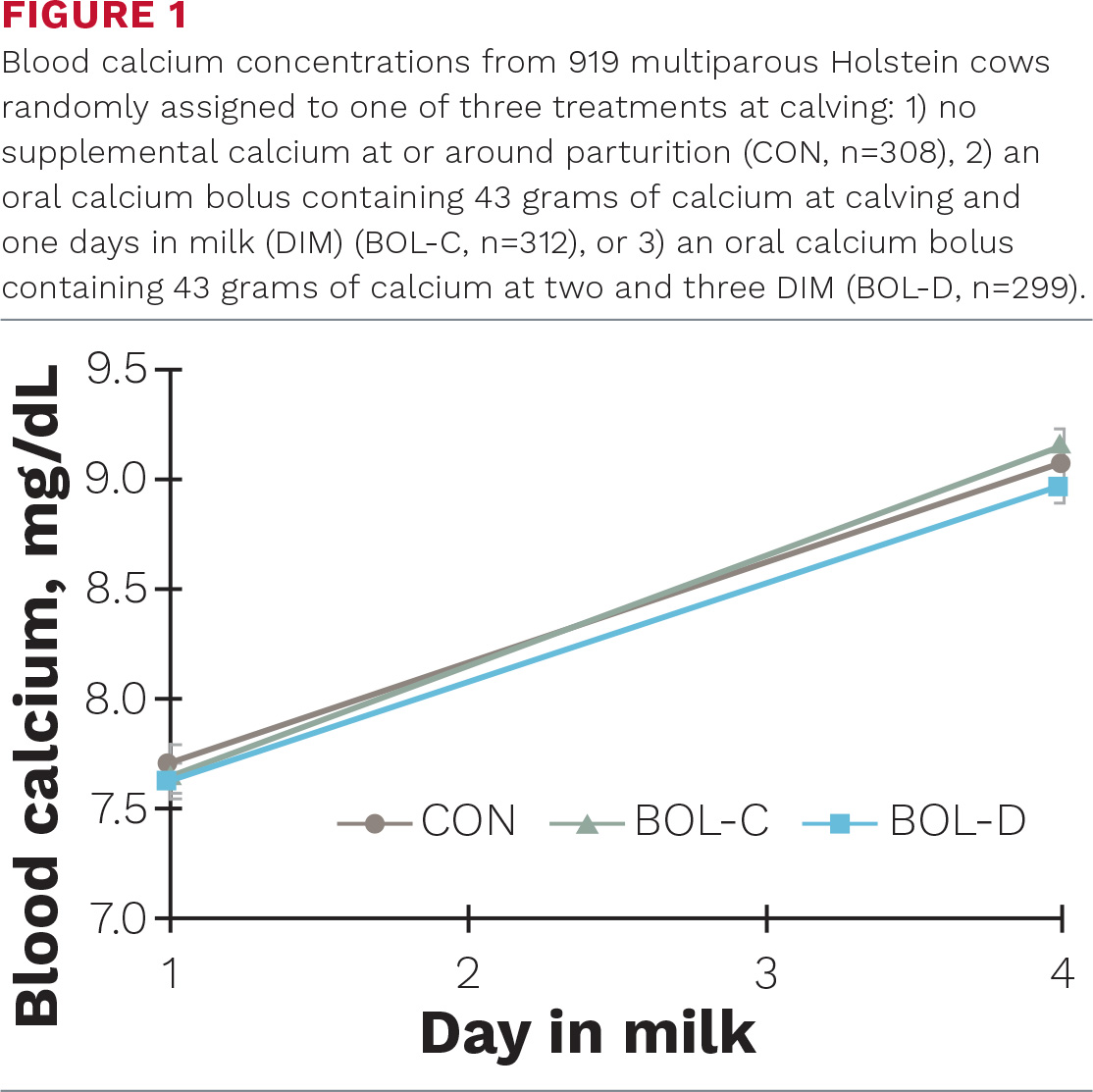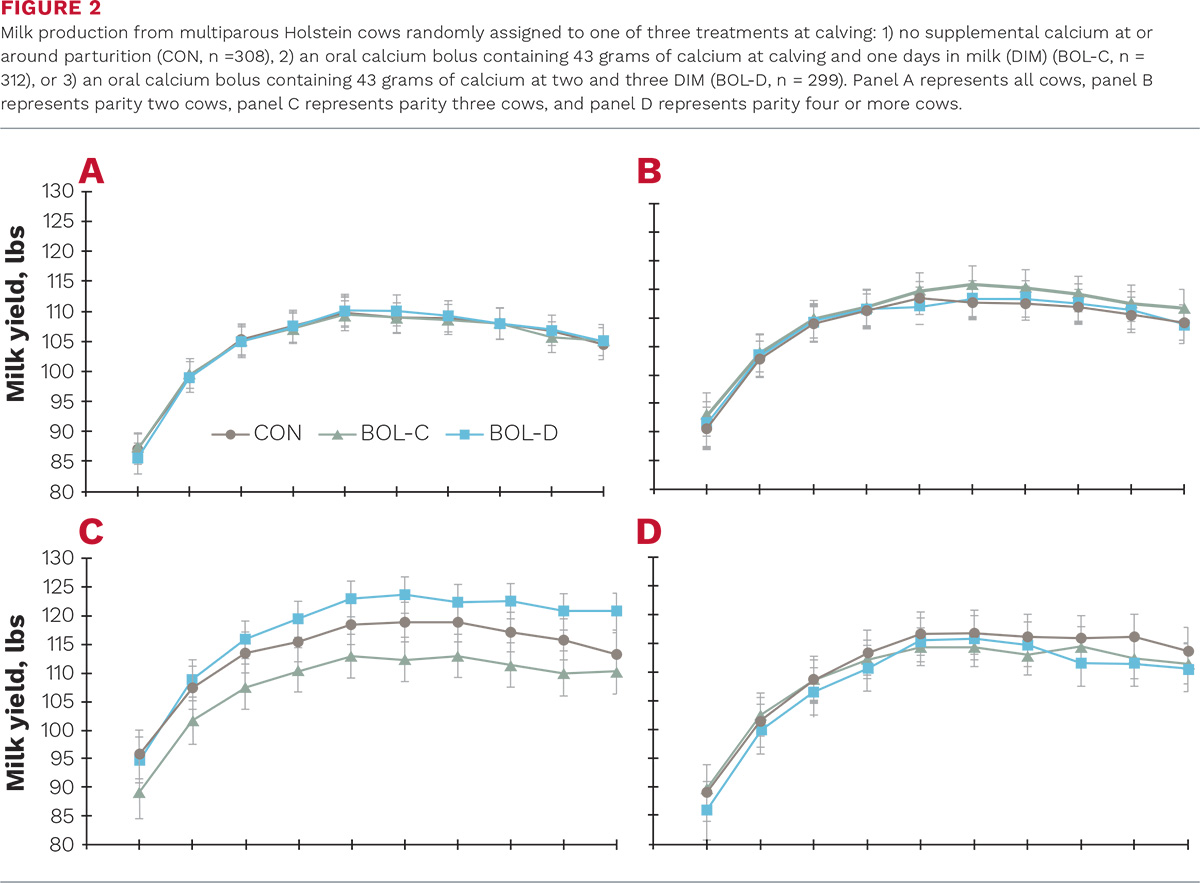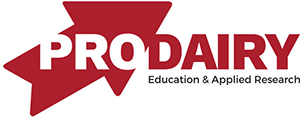Subclinical hypocalcemia (SCH) is an invisible threat to both the dairy cow and producer. As nearly 45 percent of multiparous cows experience SCH during the early lactation period, producers can implement dietary strategies such as feeding negative dietary cation anion difference (DCAD) rations in the late dry period or administering prophylactic calcium treatments to fresh cows to minimize the risk of SCH. Although negative DCAD rations have successfully reduced the incidence of clinical milk fever, many cows still experience SCH after calving. For this reason, it is commonplace to administer supplemental calcium at calving to help maintain blood calcium concentrations. Despite the widespread use of oral calcium boluses, their impacts on production and health are variable. Large-scale field studies show that when high-producing or lame cows are given calcium boluses after calving, they produce more milk and experience less disease than cows of similar status not given a bolus. However, low-producing cows and primiparous cows are negatively impacted by calcium bolus administration.
Adding to the complexity of managing SCH are the dynamics of blood calcium during the first several days of lactation. Generally, blood calcium drops during the first 24 hours after calving as the cow adjusts to the demands of milk production, and thus historically this has been deemed the optimal time to diagnose SCH. However, we have recently discovered that cows with low blood calcium at four days in milk (DIM) are more likely to experience additional diseases, produce less milk, and consume less feed than cows who only experience a drop in calcium at one DIM. With this in mind, we have asked ourselves if perhaps delaying oral calcium bolus administration to two and three DIM, as opposed to the commonly used zero and one DIM treatment strategy, would benefit cows with reduced blood at four DIM, and result in improved blood calcium, increased milk production, and less disease?
To answer this question, we collected data on 919 multiparous Holstein cows from four farms in northeastern and central NY from June through September 2021. At calving, cows were randomly assigned to one of three treatments:
- no supplemental calcium at or around parturition (CON, n = 308)
- an oral calcium bolus containing 43 grams of calcium at calving and one DIM (BOL-C, n = 312)
- an oral calcium bolus containing 43 grams of calcium at two and three DIM (BOL-D, n = 299)
We measured blood Ca at one and four DIM. Milk production was recorded for the first 10 weeks of lactation and health and culling events were recorded for the first 30 DIM.
Blood calcium concentrations were similar between treatment groups (Figure 1), and both the CON and BOL-C cows had average blood calcium concentrations of 8.4 mg/dL.

The BOL-D cows had an average Ca concentration of 8.3 mg/dL. Milk production was not impacted by bolus administration. The CON cows produced an average of 107.8 lbs/day while the BOL-C cows produced 106.5 lbs/day, and the BOL-D cows produced 108.7 lbs/day. Interestingly, when we looked at differences in milk production between different parity groups (parity two, three, and four or more), we found that cows entering their third lactation having received the delayed bolus treatment produced 4.4 lbs/day more milk than their counterparts in the CON or BOL-C groups (Figure 2).

In addition, we saw no difference between treatment groups in the incidence of metritis, displaced abomasum, or herd removals during the first 30 DIM.
Despite our thought that delaying oral calcium supplementation to two and three DIM, as opposed to traditional administration at zero and one DIM, would improve blood calcium and result in increased milk production, we found little evidence to support this. Delayed bolus administration did result in higher production in third-lactation cows, but unfortunately this improvement did not carry over to the fourth-and-greater-lactation cows. Older cows may be experiencing a calcium deficit so large due to their higher milk production, that no matter the timing of supplementation, oral calcium boluses might not provide enough additional calcium to improve blood calcium and production.
The results of our study support previous reports suggesting that oral calcium supplementation benefits a subgroup of cows. Taking this into consideration, administering calcium boluses to high-producing, lame, or older cows may be financially advantageous for producers as blanket treating every cow is costly and the financial gains from improved milk production are only realized in select groups.
 |
This article appeared in PRO-DAIRY's The Manager in November 2022. To learn more about Cornell CALS PRO-DAIRY, visit PRO-DAIRY. |







